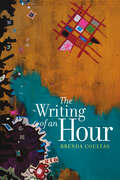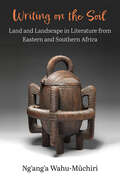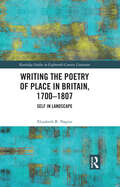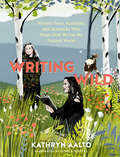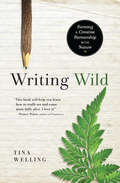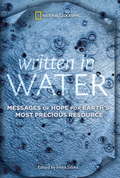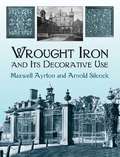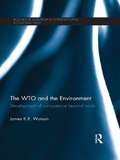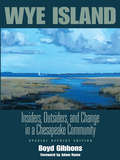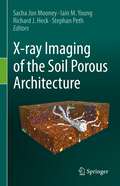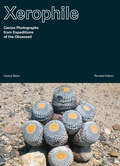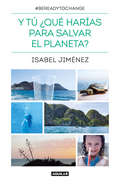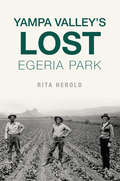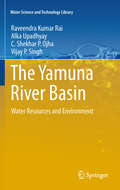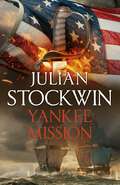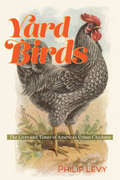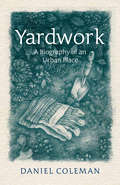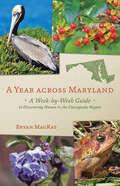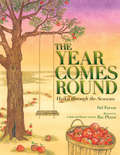- Table View
- List View
The Writing of an Hour (Wesleyan Poetry Series)
by Brenda CoultasWhat actually happens within the revolution of the clock's hands? In The Writing of an Hour the poet considers the effort and the deliberateness that brings her to her desk each day. Despite domestic and day job demands and widespread lockdown, Coultas forges connections to the sublime and wonders what it means to be from the Americas. These poems verge on the surreal, transform the quotidian, and respond anew to the marvelous. The Writing of an Hour takes the reader on a journey in four sections; from a bedroom to an improvised desk over the North Sea, where she attempts to create an artwork inside an airplane cabin flying over Greenland's rivers of ice. The Mending HourI tied one on, I mean I took my grandmother's apron, its strings and glittery rickrack and I wore it on the streets of the East Village. The apron is a cloak of superpowers, a psychic umbrella I paraded past Emma Goldman's E. 10th St. address, and rang her doorbell for a sip of water. My domestic armor is made of gingham though a woman is still considered an unelectable candidate.
Writing on the Soil: Land and Landscape in Literature from Eastern and Southern Africa (African Perspectives)
by Ng'ang'a Wahu-MuchiriAcross contiguous nation-states in Eastern Africa, the geographic proximity disguises an ideological complexity. Land has meant something fundamental in the sociocultural history of each country. Those concerns, however, have manifested into varied political events, and the range of struggles over land has spawned a multiplicity of literary interventions. While Kenya and Uganda were both British colonies, Kenya's experience of settler land alienation made for a much more violent response against efforts at political independence. Uganda's relatively calm unyoking from the colonial burden, however, led to a tumultuous post-independence. Tanzania, too, like Kenya and Uganda, resisted British colonial administration—after Germany's defeat in World War 1. In Writing on the Soil, author Ng’ang’a Wahu-Mũchiri argues that representations of land and landscape perform significant metaphorical labor in African literatures, and this argument evolves across several geographical spaces. Each chapter's analysis is grounded in a particular locale: western Kenya, colonial Tanganyika, post-independence Tanzania, Zimbabwe, Nairobi, Dar es Salaam, Anam Ka'alakol (Lake Turkana), Kampala, and Kitgum in Northern Uganda. Moreover, each section contributes to a deeper understanding of the aesthetic choices that authors make when deploying tropes revolving around land, landscape, and the environment. Mũchiri disentangles the numerous connections between geography and geopolitical space on the one hand, and ideology and cultural analysis on the other. This book embodies a multi-layered argument in the sphere of African critical scholarship, while adding to the growing field of African land rights scholarship—an approach that foregrounds the close reading of Africa’s literary canon.
Writing the Poetry of Place in Britain, 1700–1807: Self in Landscape (Routledge Studies in Eighteenth-Century Literature)
by Elizabeth R. NapierThis book discusses the intrusion, often inadvertent, of personal voice into the poetry of landscape in Britain, 1700-1807. It argues that strong conventions, such as those that inhere in topographical verse of the period, invite original poets to overstep those bounds while also shielding them from the repercussions of self-expression. Working under cover of convention in this manner and because for each of these poets place is tied in significant ways to personal history, poets of place may launch unexpected explorations into memory, personhood, and the workings of consciousness. The book supplements traditionally political readings of landscape poetry, turning to questions of self-articulation and self-expression in order to argue that the autobiographical impulse is a distinctive and innovative feature of much great eighteenth-century poetry of place. Among the poets under examination are Pope, Thomson, Duck, Gray, Goldsmith, Crabbe, Cowper, Smith, and Wordsworth.
Writing Wild: Women Poets, Ramblers, and Mavericks Who Shape How We See the Natural World
by Kathryn Aalto&“An exciting, expert, and invaluable group portrait of seminal women writers enriching a genre crucial to our future.&” —Booklist In Writing Wild, Kathryn Aalto celebrates 25 women whose influential writing helps deepen our connection to and understanding of the natural world. These inspiring wordsmiths are scholars, spiritual seekers, conservationists, scientists, novelists, and explorers. They defy easy categorization, yet they all share a bold authenticity that makes their work both distinct and universal. Featured writers include: Dorothy Wordsworth, Susan Fenimore Cooper, Gene Stratton-Porter, Mary Austin, and Vita Sackville-WestNan Shepherd, Rachel Carson, Mary Oliver, Carolyn Merchant, and Annie DillardGretel Ehrlich, Leslie Marmon Silko, Diane Ackerman, Robin Wall Kimmerer, and Lauret SavoyRebecca Solnit, Kathleen Jamie, Carolyn Finney, Helen Macdonald, and Saci LloydAndrea Wulf, Camille T. Dungy, Elena Passarello, Amy Liptrot, and Elizabeth Rush Part travel essay, literary biography, and cultural history, Writing Wild ventures into the landscapes and lives of extraordinary writers and encourages a new generation of women to pick up their pens, head outdoors, and start writing wild.
Writing Wild
by Tina WellingAlign Your Creative Energy with Nature's "Everything we know about creating," writes Tina Welling, "we know intuitively from the natural world." In Writing Wild, Welling details a three-step "Spirit Walk" process for inviting nature to enliven and inspire our creativity.
Written in Water
by Irena SalinaWritten in Water: Messages of Hope for Earth's Most Precious Resource comprises a collection of essays authored by heroes and leaders in the field of water solutions and innovations--a broad range of people from varied disciplines who have contributed their hearts and minds to bringing awareness to and conserving Earth's freshwater supply. In their own words, authors tell of such tragedies as water slavery, drought, or contamination, as well as their own professional struggles and successes in pursuit of freshwater solutions. Contributors include: Alexandra Cousteau, social environmental advocate and granddaughter of legendary marine scientist Jacques Cousteau; Peter Gleick, environmental visionary and winner of a 2003 MacArthur "genius grant"; Bill McKibben, bestselling author and winner of a Guggenheim fellowship; Sylvia Earle, oceanographer and Time magazine's first "hero for the planet"; and Christine Todd Whitman, former head of the Environmental Protection Agency, along with more than a dozen other notable people.These visionaries' stories touch, surprise, and amaze as they help us see the essential role played by water in our world, our lives, and our future. These are all people who are thinking far beyond the realm of self; they are devoted to creating a better world for all of us.
Written in Water
by Irena SalinaWritten in Water is an unforgettable collection of the true stories of people-men and women, politicians and scientists, laymen and experts-sharing in their own words what they have seen and what they have learned in their efforts to bring clean water to all.
Wrought Iron and Its Decorative Use
by Arnold Silcock Maxwell AyrtonA superb treasury of decorative wrought iron, this well-illustrated volume presents an informative survey of the ancient craft's practice throughout England. Its history can be traced simply by admiring the crisp black-and-white illustrations of gates, railings, screens, and other elaborately rendered works. 241 black-and-white illustrations.
WTF, Evolution?!: A Theory of Unintelligible Design
by Mara GrunbaumWe all have our off days. Why should Evolution be any different? Maybe Evolution got carried away with an idea that was just a little too crazy—like having the Regal Horned Lizard defend itself by shooting three-foot streams of blood from its eyes. Or maybe Evolution ran out of steam (Memo to Evolution: The Irrawaddy Dolphin looks like a prototype that should have been left on the drawing board). Or maybe Evolution was feeling cheeky—a fish with hands? Joke’s on you, Red Handfish! Or maybe Evolution simply goofed up: How else to explain the overgrown teeth of the babirusas that curl backward over their face? Oops. Mara Grunbaum is a very smart, very funny science writer who celebrates the best—or, really, the worst—of Evolution’s blunders. Here are more than 100 outlandish mammals, reptiles, insects, fish, birds, and other creatures whose very existence leaves us shaking our heads and muttering WTF?! Ms. Grunbaum’s especially brilliant stroke is to personify Evolution as a well-meaning but somewhat oblivious experimenter whose conversations with a skeptical narrator are hilarious. For almost 4 billion years, Evolution has produced a nonstop parade of inflatable noses, bizarre genitalia, and seriously awkward necks. What a comedian!
The WTO and the Environment: Development of competence beyond trade (Routledge Research in International Economic Law)
by James WatsonThis book is a review of the development of the WTO dispute resolution procedure and the power and influence it has gained over the practises of the member countries as well as in other international treaties. The book addresses the development of environmental competency in the WTO and examines the arguments of those who oppose WTO rule making with impacts on the environment. The WTO’s interactions with multilateral environmental agreements are considered and recent WTO cases including the 2011 US/Mexico tuna dispute and the US sea turtles decision are analysed in detail. In examining how an international organisation which was established with a specific purpose in mind has come to interact in fields beyond its original remit, James Watson demonstrates how the dispute resolution system at the WTO has come to work in a judicialised manner, operating with an informal system of precedent. This has led to the contracting parties placing more reliance on the decisions of the dispute panels and appeal body when considering policy options, with WTO rulings increasingly influencing the behaviour of national legislatures in regard to the environment. The book goes on to make concrete recommendations, based on existing practise in the WTO dispute resolution procedure, which could enhance decision making in environmental cases heard by the WTO. The book argues that this could be achieved with straightforward amendments to the WTO, based on existing practices endorsed under the WTO for other policy considerations. The WTO and the Environment will be of particular interest to academics and students of International and Environmental law.
Wye Island: Insiders, Outsiders, and Change in a Chesapeake Community - Special Reprint Edition
by Boyd GibbonsToday, most of the 2,800 tranquil acres that make up Wye Island are managed by the Maryland Park Service. However, from 1973 to 1974, the island was the site of a raging controversy. A major developer, James Rouse, wanted to build a compact waterfront village that would be surrounded by large estates, protected farms, and wetlands. A boyhood resident of nearby Easton, Maryland, Rouse hoped that the island could avoid the sprawl of unplanned subdivisions that were marring so many other places along the Eastern Shore. Combining history, journalism, character sketches, and sharp sociological insight, Boyd Gibbons presents the conflict over Wye Island in its multiple dimensions - as an example of the emerging community-based activism of the 1960s and 70s, and of a community that, while exercising its right to preserve its identity, denies opportunities for its members to improve their lives through change. In fact, Wye Island proves not to be the environmental David-Goliath struggle that might be expected. For one thing, residents opposed a development plan that can be regarded as an early model for 'smart growth.' And many were no more favorably disposed to a park or preserve than to a planned village. Their interest was in protecting the community from an invasion of immigrants from ethnically diverse Baltimore and Washington, and, where the wealthy were concerned, protecting some very private views of the water. In the end, rich landowners, poor 'natives,' and many recent newcomers opposed the Rouse project - distrusting change, and, above all, fearing 'outsiders.' The special reprint of Wye Island includes a new foreword by distinguished environmental historian Adam Rome, who explores the enduring themes of Wye Island in context of the current debates about land use, development, and sprawl.
X-ray Imaging of the Soil Porous Architecture
by Sacha Jon Mooney Iain M. Young Richard J. Heck Stephan PethThe advent of X-ray Computed Tomography (CT) as a tool for the soil sciences almost 40 years ago has revolutionised the field. Soil is the fragile, thin layer of material that exists above earth’s geological substrates upon which so much of life on earth depends. However a major limitation to our understanding of how soils behave and function is due to its complex, opaque structure that hinders our ability to assess its porous architecture without disturbance. X-ray imagery has facilitated the ability to truly observe soil as it exists in three dimensions and across contrasting spatial and temporal scales in the field in an undisturbed fashion. This book gives a comprehensive overview of the “state of the art” in a variety of application areas where this type of imaging is used, including soil water physics and hydrology, agronomic management of soils, and soil-plant-microbe interactions. It provides the necessary details for entry level readers in the crucial areas of sample preparation, scanner optimisation and image processing and analysis. Drawing on experts across the globe, from both academia and industry, the book covers the necessary “dos and don’ts”, but also offers insights into the future of both technology and science. The wider application of the book is provided by dedicated chapters on how the data from such imagery can be incorporated into models and how the technology can be interfaced with other relevant technical applications. The book ends with a future outlook from the four editors, each of whom has over 20 years of experience in the application of X-ray CT to soil science.
Xerophile, Revised Edition: Cactus Photographs from Expeditions of the Obsessed
by Edited by Cactus StoreAn updated edition of the cult classic, featuring stunning archival photographs of hundreds of the rarest and most spectacular plants on Earth, taken by a motley crew of cactus obsessives &“A catalogue of wonders that most of us will never get to see in person.&”—The New YorkerFrom the people behind Cactus Store comes Xerophile, a photographic collection of these improbable desert wonders in the wild. Drawing on the archives of twenty-five cactus obsessives—from PhD botanist to banker, art teacher to cancer researcher—this revised edition spans eighty years and features new and expanded descriptive notes for all 350+ photos.Xerophile brings together eighty years&’ worth of these explorers&’ remarkable images from some of the world&’s most remote habitats: a peculiar two-leaved plant that lives for millennia in the deserts of Namibia; succulents whose poisonous sap is used by hunters to fell large game in Angola; and cactus that live on snow-covered mountains in Bolivia, sink below ground level to survive droughts in Mexico, are pollinated by bats in Brazil, and grow in pure lava fields of the Galápagos Islands.
Y tú ¿qué harías para salvar el planeta?
by Isabel JiménezUn ensayo periodístico comprometido y valiente que aporta alternativas y soluciones a la contaminación producidad por el plástico. «No se trata de volver al pasado, se trata de buscar un futuro en el que tenga cabida el progreso, pero con soluciones sostenibles a los residuos. Apostemos por el consumo responsable», escribe Isabel Jiménez en Y tú ¿qué harías para salvar el planeta? Uno de los rostros más respetados de la televisión muestra su compromiso con la sostenibilidad y el medioambiente en un tema que exige soluciones ya: la reducción del consumo de plástico. El futuro del planeta está en nuestras manos, y la solución al problema también. Hay esperanza: todavía estamos a tiempo para cambiar el futuro. Es posible un consumo responsable que permita una reducción drástica de los plásticos de un solo uso. Se puede caminar hacia un nuevo modelo de producción más acorde con la naturaleza. Es hora de apostar por la economía circular: «Hacer más con menos, reducir la materia prima y reutilizar». Y el compromiso es de todos: de los gobiernos, de los empresarios, de los activistas públicos, de los ciudadanos y del propio sector del plástico. En palabras de la autora: «A todos nos debería importar qué está pasando en los mares, en los ríos y en los océanos». Convirtámonos en la generación del cambio, salvemos el planeta. Y tú ¿qué harías para salvar el planeta? es un nuevo reto en la carrera profesional de la periodista Isabel Jiménez. En sus páginas muestra su compromiso con el medioambiente y deja el sello de su estilo: rigor informativo y cercanía para convertir en realidad un objetivo necesario.
Yampa Valley’s Lost Egeria Park (Lost)
by Rita HeroldCalled the "Last Frontier," the "Land of the Last Pioneers" and the "Place that Time Forgot," Routt County was among the last places settled in the continental United States. Between 1820 and 1845, notable people such as Kit Carson, Jim Baker and Jim Bridger were all known to visit the Yampa Valley. But it wasn't until the removal of the Utes in 1881 that Egeria Park flourished. Stagecoaches, railroads, cattle, grain and sawmills followed. And despite the remote location, it grew into an agricultural and economic hub, the exact boundaries of which are still contested. Alas, Egeria Park dissolved with time. Author Rita Herold uncovers sketches of lost heroes, scoundrels and everyday characters who made history here.
The Yamuna River Basin
by Alka Upadhyay C. Shekhar Ojha Raveendra Kumar Rai Vijay P. SinghThis book is designed to provide concepts, methodologies, and approaches for river basin studies with respect to water resources and environment. The book is not limited to the Yamuna River basin, but will help in the study of various other river basins for integrated water resources management. The book covers the essential components of integrated water resources management, including analysis of climatic variables, climate change detection, analysis of natural resources, geology, geomorphology, socio-economics, water budgeting, flood estimation, river pollution, etc. Furthermore, the book addresses recent issues pertaining to water quality, water quality indices, environmental flows, water resources management through cropping pattern change, etc. along with methodologies and application to the Yamuna River system. However, the main objective of this book is to address important issues of water resources management of river basins. Audience: The manuscript has been designed so that it can be used as a reference for river basin studies. The book will be useful to engineers, agricultural scientists, environmentalists, planners, managers, and administrators who are concerned with water resources.
Yankee Mission: Thomas Kydd 25 (Thomas Kydd #36)
by Julian Stockwin'Yankee Mission is a jewel in Julian Stockwin's crown as a master in naval fiction, with a ship-to-ship fight so vivid that the battle's sounds and scents fly off the pages like lethal wooden splinters' - Quarterdeck1812. Off the coast of Brazil, HMS Java, a proud British 38-gun frigate, is captured in battle by the American USS Constitution - signaling across the world's oceans a challenge to Britain's naval premiership that cannot be ignored.Back in EnglandCaptainSir Thomas Kydd is enjoying a moment of normal life with his wife and his newborn son. With his Thunderer in dock receiving some well-earned repairs he is, momentarily, without a command. It's a position the Admiralty does not leave him in for long, and he is soon given a mission: engage the young republic in a fair fight, frigate against frigate, and restore the Navy's reputation. And they have just the ship and crew for him . . . Tyger. But on reaching the US east coast, Kydd and his trusted Tygers realise that the hardest part of their mission will be drawing out one of the Yankee men-o'-war to engage in battle - especially once the Americans get wind of his purpose. It's a tall order, requiring every ounce of the crew's guile and persistence - and when fortune turns against them, Kydd finds not only his career, but his life, hanging in the balance.Praise for Julian Stockwin's Kydd series:'A very readable and enjoyable story . . . I can only recommend that you go out, beg, borrow or buy, and enjoy' - Bernard Cornwell 'In Stockwin's hands the sea story will continue to entrance readers across the world' - Guardian'The characterization is first-class, and the reader quickly becomes involved with all that happens' - Historical Novels Review
Yankee Mission: Thomas Kydd 25 (Thomas Kydd #36)
by Julian Stockwin'Yankee Mission is a jewel in Julian Stockwin's crown as a master in naval fiction, with a ship-to-ship fight so vivid that the battle's sounds and scents fly off the pages like lethal wooden splinters' - Quarterdeck1812. Off the coast of Brazil, HMS Java, a proud British 38-gun frigate, is captured in battle by the American USS Constitution - signaling across the world's oceans a challenge to Britain's naval premiership that cannot be ignored.Back in EnglandCaptainSir Thomas Kydd is enjoying a moment of normal life with his wife and his newborn son. With his Thunderer in dock receiving some well-earned repairs he is, momentarily, without a command. It's a position the Admiralty does not leave him in for long, and he is soon given a mission: engage the young republic in a fair fight, frigate against frigate, and restore the Navy's reputation. And they have just the ship and crew for him . . . Tyger. But on reaching the US east coast, Kydd and his trusted Tygers realise that the hardest part of their mission will be drawing out one of the Yankee men-o'-war to engage in battle - especially once the Americans get wind of his purpose. It's a tall order, requiring every ounce of the crew's guile and persistence - and when fortune turns against them, Kydd finds not only his career, but his life, hanging in the balance.Praise for Julian Stockwin's Kydd series:'A very readable and enjoyable story . . . I can only recommend that you go out, beg, borrow or buy, and enjoy' - Bernard Cornwell 'In Stockwin's hands the sea story will continue to entrance readers across the world' - Guardian'The characterization is first-class, and the reader quickly becomes involved with all that happens' - Historical Novels Review
Yankee Mission: Thomas Kydd 25 (Thomas Kydd #36)
by Julian StockwinSwashbuckling adventure during the great Age of Sail.With Bonaparte held to a stalemate in Europe, the race to empire is now resumed. Britain's ambitions turn to the Spice Islands, the Dutch East Indies, where Admiral Pellew has been sent to confront the enemy's vastly rich holdings in these tropical islands. Captain Sir Thomas Kydd joins reinforcements to snatch these for the British Crown.The two colonial masters of India and the East Indies face each other in mortal striving for the region - there can be only one victor to hold all the spoils. The colonial genius, Stamford Raffles, believes Britain should strike at the very centre of Dutch spice production, the Moluccas, rather than the fortresses one by one but is fiercely opposed. Kydd, allying himself to this cause, conspires to lead a tiny force to a triumphant conclusion - however the Dutch, stung by this loss, claim vengeance from the French. A battle for Java and an empire in the East stretches Kydd and Tyger's company to their very limits.*************Praise for Julian Stockwin's Kydd series'In Stockwin's hands the sea story will continue to entrance readers across the world' Guardian'Paints a vivid picture of life aboard the mighty ship-of-the-line' Daily Express'This heady adventure blends fact and fiction in rich, authoritative detail' Nautical Magazine'Fans of fast-paced adventure will get their fill with this book' Historical Naval Society(P) 2022 Hodder & Stoughton Limited
Yard Birds: The Lives and Times of America’s Urban Chickens
by Philip LevyIn 2009, the New Yorker declared chickens the "it bird" and heralded "the return of the backyard chicken." This honor occurred as, a host of American cities were changing their laws to allow chickens in residents’ backyards. Philip Levy, a sometime chicken keeper himself, mixes cultural history with husbandry to chronicle the weird and wonderful story of Americans’ urban chickens. From the streets of Brooklyn to council chambers in Albany to the beat of Key West’s Chicken Nuisance Patrol, yard birds are an important and growing part of American city life.Part history, part travelogue, and part reportage, Yard Birds takes the reader on a tour-de-force journey across America, past and present, to profile its urban chickens housed in luxury coops or dying at yearly rituals. What emerges is a compelling picture of city chickens that can both serve as hipster status symbols and guarantee that the families keeping them have at least something to eat. Levy’s smart and entertaining investigation of the contemporary urban chicken craze reveals that poultry flocks were historically an integral part of America’s urban spaces; chickens have simply returned home now, some to very fancy roosts.
Yardwork: A Biography of an Urban Place
by Daniel ColemanShortlisted: 2018 RBC Taylor Prize for Literary Non-fiction How can you truly belong to a place? What does being at home mean in a society that has always celebrated the search for greener pastures? And can a newcomer ever acquire the deep understanding of the land that comes from being part of a culture that has lived there for centuries? When Daniel Coleman came to Hamilton to take a position at McMaster University, he began to ask himself these kinds of questions, and Yardwork: A Biography of an Urban Place is his answer. In this exploration of his garden – which Coleman deftly situates in the complicated history of Cootes Paradise, off of Hamilton Harbour – the author pays close attention to his small plot of land sheltered by the Niagara Escarpment. Coleman chronicles enchanting omnivorous deer, the secret life of water and the ongoing tension between human needs and the environment. These, along with his careful attention to the perspectives and history of the Six Nations, create a beguiling portrait of a beloved space.
A Year across Maryland: A Week-by-Week Guide to Discovering Nature in the Chesapeake Region
by Bryan MacKayA week-by-week look at the abundant wildlife and plants in and around Maryland—where and when to find them.When can you find ripe blueberries along the Appalachian Trail in Maryland? Where can you see the air filled with monarch butterflies as they migrate south each autumn? If you want to enjoy nature this weekend, where is the best place to visit? Bryan MacKay can tell you.Written as an almanac, A Year across Maryland invites you to explore the natural world throughout the year, from watching bald eagles nesting in January to harvesting mistletoe in December. Entries identify the best time and place to experience such wonders as wildflowers blooming, birds in migration, amphibians singing, and morel mushrooms ready to be picked, sliced, sautéed, and devoured. Color photographs of more than seventy species enrich and illustrate the text. Every week of the year has a recommended "Trip of the Week." Personal essays that draw from MacKay's field notes provide an intimate glimpse into a biologist encounters with plants and animals over the years.Whether you want to see snow geese and trumpeter swans pausing in their northward migration each March, or the mating "jubilee" of polychaete worms during the new moon in May, A Year across Maryland offers valuable advice for the spontaneous adventurer and the serious planner alike.
The Year Comes Round
by Sid Farrar Ilse PlumeBrown bear politelyoffers to surrender hisden to nosy skunkTwelve nature-themed haiku accompanied by lush illustrations take the reader from January to December. A great way to introduce children to the traditional Japanese poetry form.
A Year in the City (Season to Season)
by Christina Mia GardeskiFrom snow plows to skyscraper nests and rooftop gardens, life in the city changes from season to season. Discover what animals live in the city. Learn how smog forms in summer. Real-life photographs follow the seasons and capture the beauty of a year in the city.
A Year in the Forest (Season to Season)
by Christina Mia GardeskiFrom hibernation to baby animals and falling leaves, life in the forest changes from season to season. Discover why snow is good for trees. Learn how wildfires help the forest grow. Real-life photographs follow the seasons and capture the beauty of a year in the forest.
